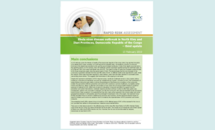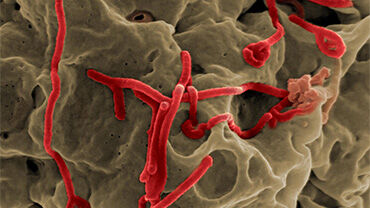Rapid risk assessment: Ebola virus disease outbreak in North Kivu and Ituri Provinces, Democratic Republic of the Congo – third update
This is the third update of the rapid risk assessment published on the 9 August 2018. It addresses the public health risk associated with the current Ebola virus outbreak in the Democratic Republic of the Congo (DRC) and its implications for EU/EEA citizens. This update was triggered by the persistence of the Ebola virus disease (EVD) transmission in urban settings, the continuous increase in the number of reported cases during the last four weeks, the persistent occurrence of new cases among contacts unknown at the time of EVD diagnostics and current challenges for the prevention and control of EVD.
Executive Summary
This epidemic in North Kivu and Ituri Provinces is the largest ever recorded in DRC and the second largest worldwide. As of 6 February 2019, the Ministry of Health of the Democratic Republic of the Congo has reported 791 Ebola virus disease cases, including 737 confirmed and 54 probable cases. A total of 492 deaths occurred during the reporting period, consisting of an overall case fatality rate of 62%.
As of 29 January 2019, 65 healthcare workers have been reported among the confirmed cases.
While the majority of the cases have been reported in urban settings, some have also been reported in rural health zones surrounding urban centres. This suggests that transmission is also ongoing in rural areas. The weekly number of cases has increased to approximately 40 for three consecutive weeks, indicating that the viral circulation in the community is persistent.
Persistence of Ebola virus circulation
Despite the impressive mobilisation of response actors, significant challenges remain in this complex setting marked by a long-term humanitarian crisis and an unstable security context. According to WHO, the persistence of Ebola virus circulation in the community is driven by the sub-optimal infection prevention and control practices in primary healthcare, incomplete contact tracing and follow-up, delays in detection and isolation of new cases and community deaths leading to potential exposure of relatives to EVD.
Efforts are on-going to strengthen community-led efforts to support key EVD prevention and control interventions. Outbreak response activities continue in order to offer high quality case management, perform ring vaccination campaigns, provide the community with safe and dignified burials and ensure Points of Entry screening.
New EVD cases are expected to be reported in the coming weeks. A geographical extension is still possible, given the prolonged humanitarian crisis in the region, the important crossborder population flows to and from neighbouring provinces and countries, and the observed adverse impact of security incidents and community reticence which is hindering the implementation of EVD prevention and control measures.
Risk to the EU
The probability that EU/EEA citizens living or travelling in EVD-affected areas of DRC will be exposed to the virus is low, provided they adhere to precautionary measures. There are no international airports in the affected areas with direct flights to the EU/EEA Member States, which limits the risk of the virus being introduced into these countries. The overall risk of introduction and further spread of Ebola virus within the EU/EEA remains very low. However, the risk can only be eliminated by stopping transmission at local level.
Download
Read more on this site
Ebola outbreaks in the Democratic Republic of the Congo
The 12th outbreak of Ebola virus disease (EVD) in the Democratic Republic of the Congo (DRC) lasted from 7 February 2021 to 3 May 2021






